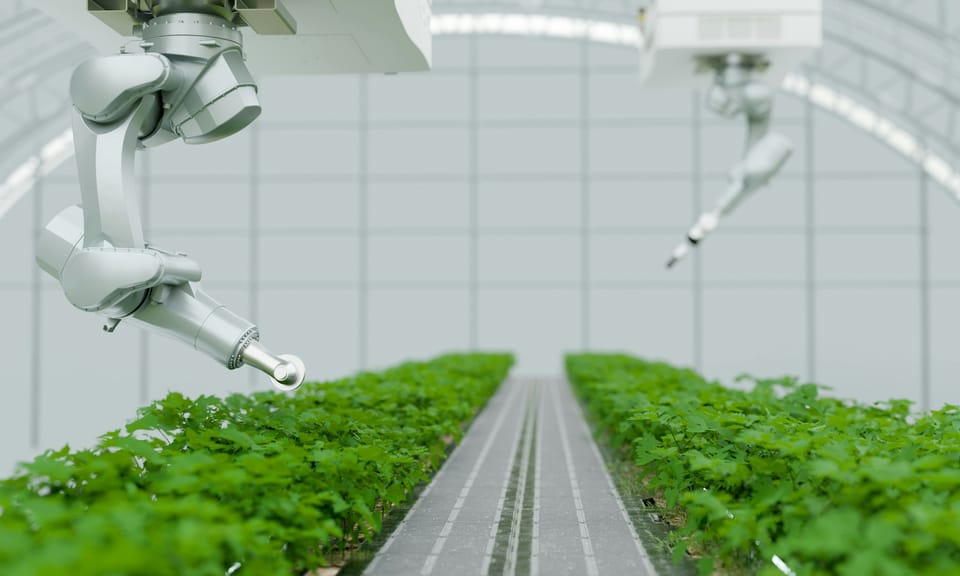Advancement of Robots: Technological Transformations in Farming.

Introduction to Technological Transformations in Farming
As the global population continues to grow, the demand for food production increases, presenting significant challenges and pushing the agricultural sector towards greater innovation and efficiency. One of the most transformative forces in modern agriculture is the advancement of robotics technology. Robots are revolutionizing the farming industry by improving productivity, efficiency, and sustainability. This article explores how these technological advancements are reshaping agriculture, enhancing traditional practices, and paving the way for a future of autonomous farming systems.
Key Advancements in Farming Robots
Autonomous Tractors
Autonomous tractors are at the forefront of revolutionizing farming practices. These robots, equipped with GPS and sensor technology, can perform essential tasks such as plowing, planting, and harvesting without human intervention. The precision of autonomous tractors not only increases efficiency but also minimizes waste of seeds, fertilizers, and pesticides, thereby reducing the environmental footprint.
Drones for Crop Monitoring and Health Assessment
Drones are increasingly being used in precision agriculture for monitoring crop health and soil conditions. They provide real-time data through aerial imagery, which helps farmers make informed decisions about irrigation, pest control, and crop rotation. This bird’s-eye view ensures that issues can be identified and addressed swiftly, leading to healthier crops and optimized yield.
Robotic Harvesters
Robotic harvesters are transforming the harvesting process by reducing the dependency on human labor, which is often scarce and expensive. These machines are designed to precisely pick crops like strawberries, apples, and tomatoes without damaging them. This not only speeds up the harvesting process but also reduces losses and waste associated with manual handling.
Weed Control Robots
Another significant advancement is the development of weed control robots. These robots use cameras and artificial intelligence to differentiate between crops and weeds. They can precisely target and eliminate weeds, reducing the need for chemical herbicides and promoting an eco-friendly approach to weed management.
Benefits of Robotic Technology in Agriculture
The integration of robotic technology in farming offers numerous benefits:
- Increased Efficiency: Robots can operate 24/7, in various weather conditions, enhancing overall productivity.
- Cost Reduction: Automation reduces the reliance on human labor, which can be a significant cost in farming.
- Environmental Sustainability: Precision agriculture allows for the minimal use of water, fertilizers, and pesticides, reducing pollution and soil degradation.
- Data-Driven Insights: The use of sensors and AI in agricultural robots provides farmers with valuable data to make informed decisions, improving crop management and yield.
Challenges and Future Directions
Despite its many advantages, the adoption of robotic technology in farming faces several challenges. High initial investment costs, lack of technical expertise among farmers, and concerns about data security are some of the significant hurdles. Moreover, there is also the need for improved battery life and energy efficiency in robots to ensure they can operate effectively throughout long farming cycles.
Looking ahead, continuous research and development are pivotal for overcoming these challenges. Innovations such as solar-powered robots and enhanced AI algorithms for better decision-making are already on the horizon. Additionally, more farmer-friendly interfaces and improved connectivity can help bridge the gap between technology and practical usability.
Here's a thought to consider
The integration of robotics into farming marks a critical evolution in agricultural practices. As we advance, this technology not only promises increased efficiency and production but also a more sustainable approach to food cultivation. Embracing these innovations will be crucial for feeding the growing global population and preserving our environmental resources.
Looking for updates? Sign up to our newsletter for weekly snippets.




